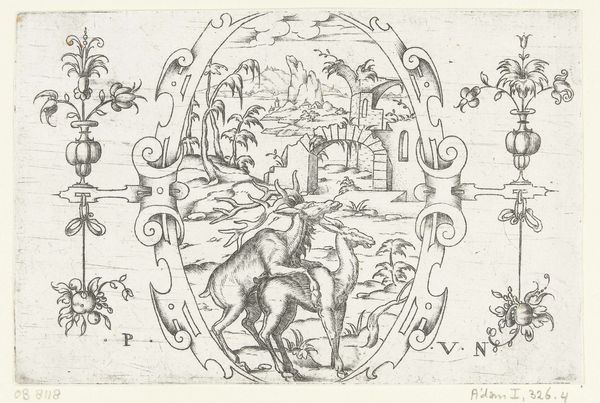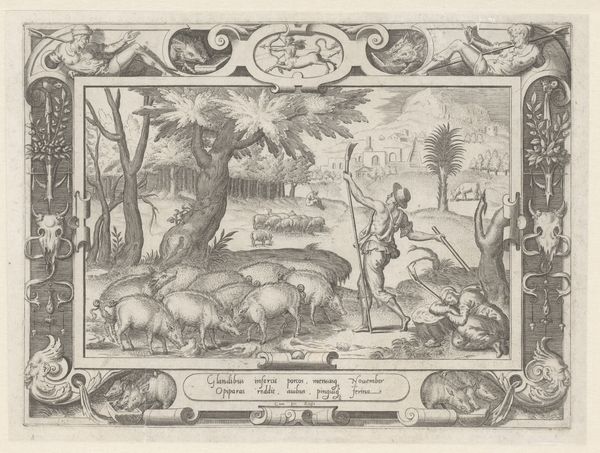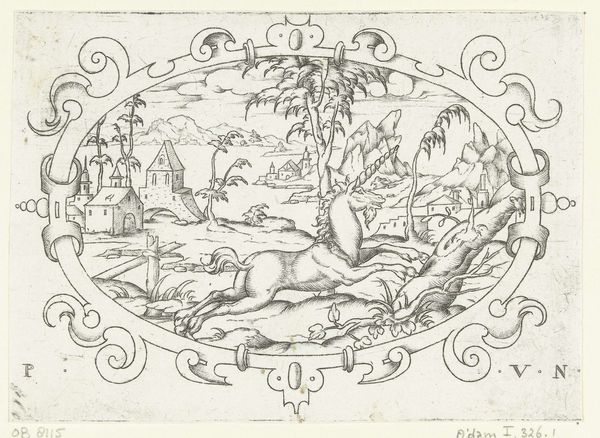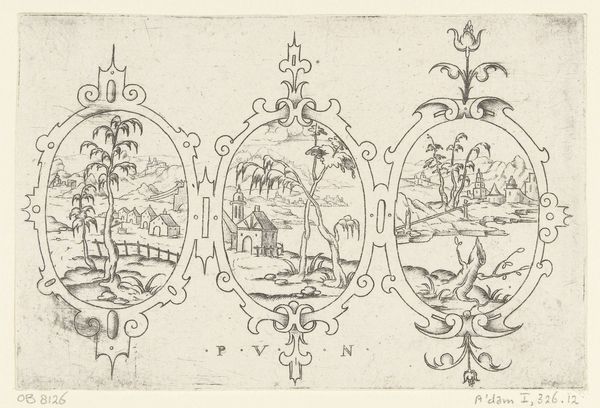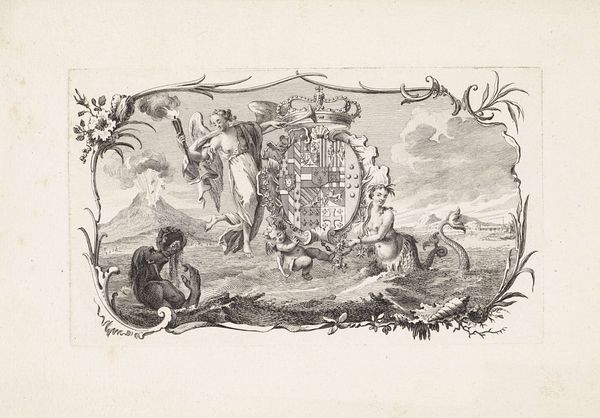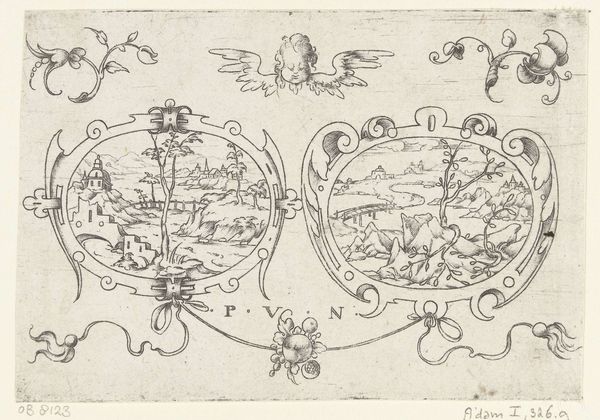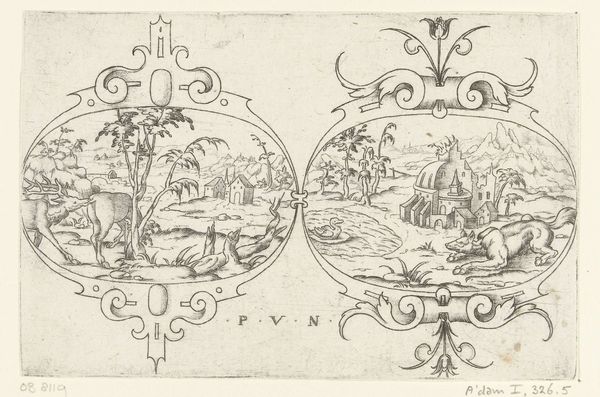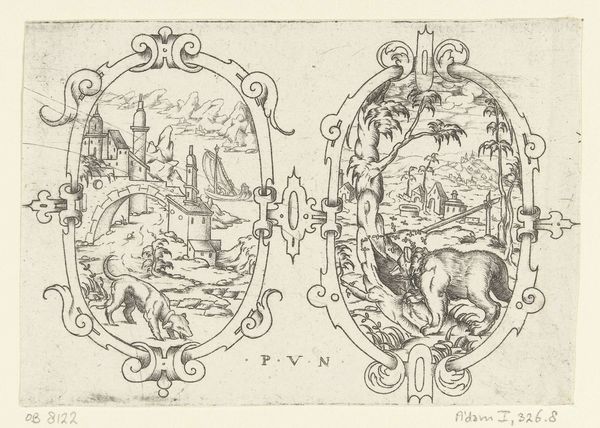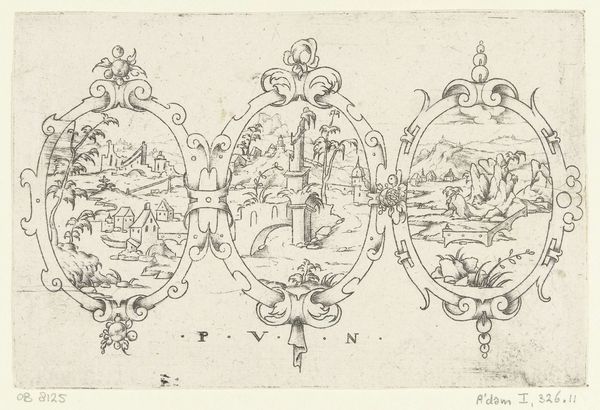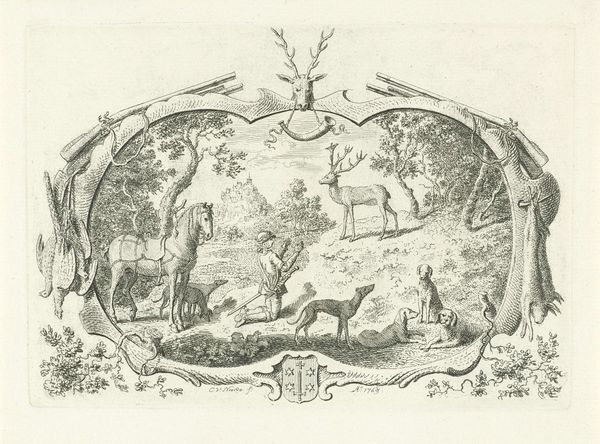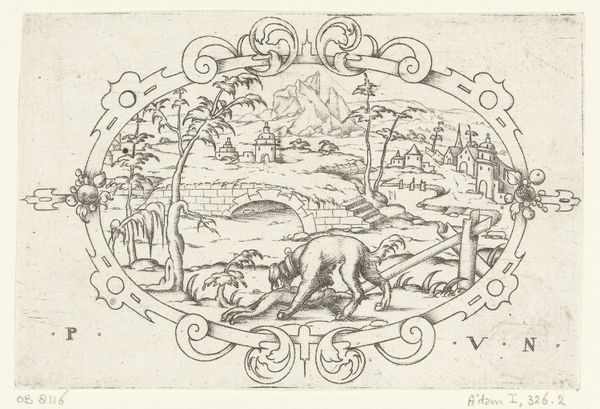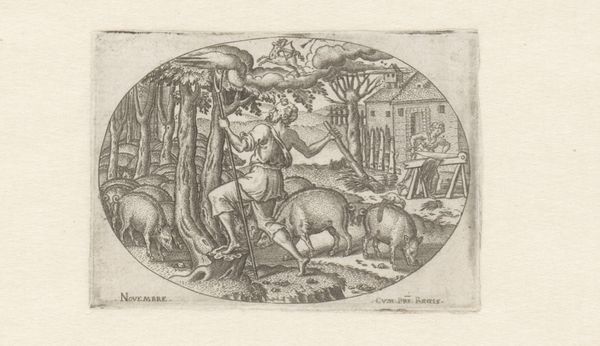
drawing, print, etching, engraving
#
drawing
#
medieval
# print
#
pen illustration
#
pen sketch
#
etching
#
landscape
#
pen-ink sketch
#
line
#
pen work
#
sketchbook drawing
#
genre-painting
#
engraving
Dimensions: height 100 mm, width 152 mm
Copyright: Rijks Museum: Open Domain
Editor: So, this is "Ovaal met een everzwijn," from around the 17th century, attributed to Paul (de Jonge) Flindt. It’s an etching, engraving, and drawing of a wild boar. The intricacy is amazing – so many detailed lines to create this oval landscape! How do you interpret this work, focusing on its materiality and creation? Curator: Looking at this etching, I'm drawn to the labor involved. Think about the craftsman meticulously incising these lines into a metal plate. The process itself – the tools, the pressure, the skill – it's all embedded within the final print. Does the mass production of prints challenge our conventional ideas about art as a unique, precious commodity? Editor: Absolutely. It feels like a very reproducible format for distribution, challenging this concept of high art. How does this specific imagery of the boar contribute, then? Curator: Consider the role of the boar within the landscape. It roots around for food, a raw engagement with its environment. Is Flindt contrasting the animal’s labor with the very human, arguably more refined, labor of constructing the town in the background? The natural versus the built environment – two modes of material engagement. Editor: That's a great point. It almost feels like there's tension. One thing I'm now wondering about is the purpose and accessibility of it for society. Curator: Exactly! This print enters a cycle of consumption, right? People acquire, display, and interpret it, reinforcing or perhaps questioning established social and aesthetic norms. Editor: It's fascinating to think of it not just as an image, but also as an artifact of labor and consumption. Thanks! Curator: It encourages us to ask how meaning arises not only from the image itself but also from its making and circulation. Food for thought!
Comments
No comments
Be the first to comment and join the conversation on the ultimate creative platform.
